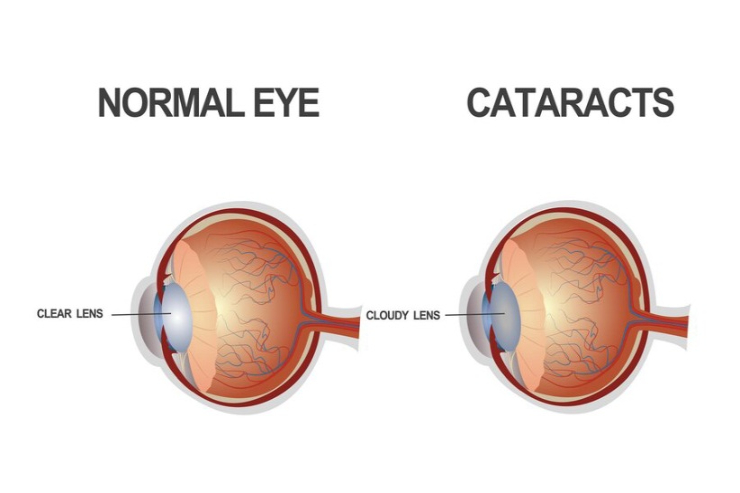
Cataracts are a common eye condition, especially as we age. They occur when the lens of the eye becomes cloudy, making it difficult to see clearly. Imagine looking through a foggy window—everything seems blurred, colors might appear dull, and lights could cause glare. These are all signs of cataracts, and if left untreated, they can significantly impact your daily life.
Cataracts usually develop as part of the natural aging process. Over time, the proteins in the lens of your eye begin to break down and clump together, creating cloudy areas that interfere with your vision. Other factors, such as diabetes, excessive sun exposure, smoking, and certain medications, can also increase the risk of developing cataracts.
Symptoms to Watch For
Cataracts often develop slowly, so you might not notice changes in your vision right away. Some common symptoms include:
If you’re experiencing any of these symptoms, it’s important to schedule an eye exam. Early detection can help you manage the condition effectively.
Cataracts are a common eye condition, especially as we age. They occur when the lens of the eye becomes cloudy, making it difficult to see clearly. Imagine looking through a foggy window—everything seems blurred, colors might appear dull, and lights could cause glare. These are all signs of cataracts, and if left untreated, they can significantly impact your daily life.
What Causes Cataracts?
Cataracts usually develop as part of the natural aging process. Over time, the proteins in the lens of your eye begin to break down and clump together, creating cloudy areas that interfere with your vision. Other factors, such as diabetes, excessive sun exposure, smoking, and certain medications, can also increase the risk of developing cataracts.
Symptoms to Watch For
Cataracts often develop slowly, so you might not notice changes in your vision right away. Some common symptoms include:
If you’re experiencing any of these symptoms, it’s important to schedule an eye exam. Early detection can help you manage the condition effectively.
Treatment Options
The only effective treatment for cataracts is surgery. At Sri Nirwana Netralaya Eye Hospital, we offer advanced cataract surgery techniques designed to restore your vision safely and effectively. During the procedure, the cloudy lens is removed and replaced with a clear artificial lens known as an intraocular lens (IOL). The surgery is typically quick, minimally invasive, and performed on an outpatient basis, meaning you can go home the same day.
The only effective treatment for cataracts is surgery. At Sri Nirwana Netralaya Eye Hospital, we offer advanced cataract surgery techniques designed to restore your vision safely and effectively. During the procedure, the cloudy lens is removed and replaced with a clear artificial lens known as an intraocular lens (IOL). The surgery is typically quick, minimally invasive, and performed on an outpatient basis, meaning you can go home the same day.
At Sri Nirwana Netralaya, we believe that your vision is not just a sense, but a gift that deserves the highest level of care and attention. Our hospital is committed to preserving and enhancing this gift through a blend of cutting-edge technology, skilled professionals, and a compassionate approach to patient care.